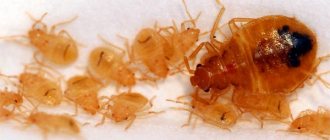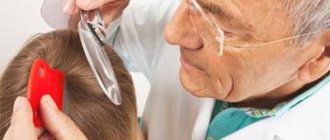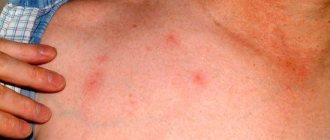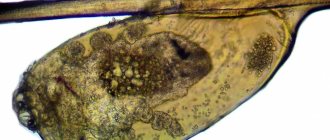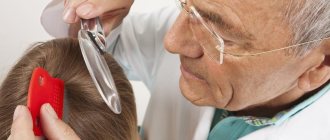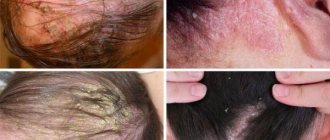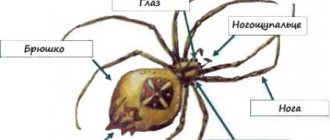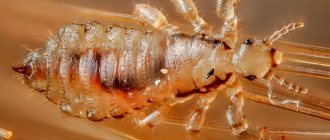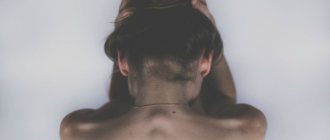Pediculosis is a disease that consists of the appearance of lice and nits on the hairy parts of the human body - the head and genitals. Lice are parasites that live, feed and reproduce only on humans. They do not breed on other species, such as cats or dogs, so you cannot become infected with head lice from pets or stray animals. Lice are transmitted only from person to person, since in order to exist they need human blood, which they feed on. But there are quite a lot of options for where lice come from in humans. Let's look at them below.
What types of lice do humans have?
The reasons for the appearance of lice are related to their characteristics and lifestyle. There are three types of parasites that live on humans and feed on their blood:
- head louse - lives and lays eggs on the scalp, it needs hair to move and attach nits to them, without hair the insect will not be able to move on the head, but it may well leave eggs, gluing them to the skin scales;
- pubic louse - lives on parts of the body on which not only hair grows, but also contains apocrine glands that secrete a special secret that is attractive to parasites; this is the genital area, around the anus, in the armpits, on the eyebrows and eyelashes;
- The body louse is a specific species that does not live on the human body; it prefers to lay eggs not on it either, but uses a person only for food, going out to hunt him, the rest of the time he hides in clothes, bedding and accessories, and other textiles.
Each of the three species lives in a strictly defined place, that is, the pubic louse cannot parasitize the head, and the head louse cannot parasitize the genitals. And they are transmitted from person to person in the same way: a head louse will try to get on the head, a pubic louse on the genitals, a body louse on the clothes next to the person.
Theory and evidence
According to this theory, in every person, larvae live in the body like bacteria. They are located under the skin and simply exist, bringing neither benefit nor harm. Under the influence of certain factors, for example, stress or a protracted illness, they begin to become more active. And after a while, adult insects crawl out. There is even a photo on the Internet in which the bumps on the skin are clearly visible. However, it is actually unclear what is inside and what causes the defect. It is interesting that this version continues to exist in the civilized world, when everything has already been studied and proven.
https://youtube.com/watch?v=xYjICEj6lT0
Similar version, but slightly different. Lice appear under the scalp due to infection. Similar to scabies mites. However, there is also a contradiction in this. If the scabies mite lays eggs under the skin, then lice lay on the hair. There's no point in living there. Moreover, they need oxygen to exist. And how, in fact, does the scalp differ from other parts of the body? After all, according to the theory, they only affect the head.
Myths associated with lice
There are established opinions about what causes lice to appear, but almost all of them are myths, that is, they have no basis and do not stand up to criticism:
- Lice appear in those who do not maintain personal hygiene. This is not entirely true. Parasites themselves do not spontaneously generate on dirt. Of course, if a person rarely washes and changes clothes, then the risk of not noticing lice is greater. But because of the dirt, insects do not appear.
- Lice are caused by stress. Again, by themselves, they do not originate in a person experiencing stress. Psychological difficulties can lead to the fact that a person does not pay attention to the physical condition, but due to stress, lice do not develop.
- Lice appear exclusively on people leading an asocial lifestyle, while “decent people” cannot have them. Everyone can catch insects with equal success. Status and wealth are not decisive here. People with low social responsibility may not be able to get rid of insects or do not consider it necessary. But the risk of contracting head lice does not depend on lifestyle. Lice, alas, exist in all levels of society.
Symptoms
The fact that a person has itching can be noticed from the moment it appears. Because you immediately feel some discomfort. Most often, the subcutaneous mite settles in those places of the dermis where there is no hair.
Unlike the parasite itself, their passages are clearly visible. The presence of subcutaneous lice can be understood by the following symptoms. A person develops a red rash in the places where the tick parasitizes, and the following are observed:
- hot flashes;
- slight increase in temperature;
- swelling gradually turning into a blister.
Tick larvae and females in search of blood cause severe itching. The peak activity of subcutaneous ticks occurs from 3 to 6 am. It is at this time that the itching becomes unbearable. It is almost unbearable to endure this malaise. Because of it, a person’s psychological state worsens. The resulting stress is also considered a sign of illness. During the day a person hardly itches.
Ways of infection with pediculosis
The most basic way you can catch parasites is through direct contact with infected people. The head louse moves from head to head when touched or if you simply pass or stand very close to an infested person. Insects move through hair very quickly. Pubic lice pass from one person to another during sexual intercourse or while sleeping in the same bed in close proximity.
The second way is when using the personal belongings of an infected person. Lice can be found in a variety of objects:
- hats;
- clothing and underwear;
- combs, hairpins, elastic bands and other hair accessories;
- towels;
- bed sheets;
- pillows and blankets.
You can easily catch lice on public transport. On the seats of trains, buses, and planes, especially on soft textile headrests, including those with individual napkins, insects can go unnoticed and easily move from there onto their heads.
Treatment
Typically, aggressive agents, such as tar soap, dust or kerosene, help fight lice. But the eyes are a sensitive place, and if contacted, these products can cause a corneal burn or an allergic reaction.
Therefore, for the treatment of phthiriasis, agents are chosen with caution so as not to cause more harm . There are two ways to combat lice: mechanical and medicinal.
Mechanical method
This method of treating lice on eyelashes consists of several methods:
- Combing out parasites and nits using a special small comb with fine teeth. The procedure is quite difficult, since the area of infection is very small. You should also not act on your own, as the remains of excrement and eggs can get on the eyeball, which can lead to more serious diseases, such as conjunctivitis.
- Another method is to remove lice and nits using tweezers . This procedure requires a long time and manual dexterity, since the eggs are tightly attached to the hair. Here, too, you cannot do without the help of an outsider.
- Also, in case of infection complete removal of hair from the eyes is recommended ; for this, the eyelashes are trimmed as short as possible. Typically, this method is used to treat head lice in children, since it is quite difficult to comb out parasites from them.
Drug treatment
Advice: You shouldn’t stop after the mechanical method; you also need to apply certain medications to your eyelids to make the treatment more effective.
Let's look at some of them:
- If the lesion is not too large, then applying Vaseline . It should be rubbed into the roots of the eyelashes daily, up to three times a day until complete recovery.
- In case of large infestation, you can prepare a solution consisting of kerosene and soap in a 1:1 ratio.
It must be applied carefully, with your eyes closed, to avoid getting into your eyes. After application, leave for 10 minutes and then rinse with plenty of water. - Also for getting rid of lice you can buy permethrin, which are used with caution and after consultation with a doctor, as they are very aggressive.
Also, to avoid burns, the preparations must be diluted with water in a 1:1 percentage ratio.For example, Pedilin, Nyx, which are applied with a cotton swab to the eyelash line, then left for a while and washed off with water.
- Sulfur ointment is sometimes used to combat parasites. It is also applied to areas without eyelashes daily.
Our website has many useful articles about pediculosis:
- Do lice grow on colored hair and what are the specifics of treatment and selection of anti-pediculosis agents?
- how to remove nits and lice from long hair without resorting to a “zero” haircut?
- what to do if lice appear on your head? First and subsequent actions!
- what to use to combat parasites on the head: what are lice and nits afraid of?
- how the head is examined for lice: algorithm of actions and recommendations;
- treatment of pediculosis in pregnant women, as well as in nursing mothers: how to safely remove harmful parasites?
- pediculosis in adults: causes of infection and how to treat lice and nits?
- the best of the best: products for the prevention of head lice.
Is it possible to get lice without close contact?
Lice cannot fly or jump far, as, for example, fleas do. But they move quite well on different surfaces. The insect can crawl a distance of 30 - 50 cm. This means that there is no need for close contact to pick up lice. That is, a person with lice could sit on a bench in the park, put his hat on it, from which the louse had crawled onto the bench, and leave from there. And another person, sitting down on this bench in half an hour or an hour, can become a new victim of the insect.
It is worth saying that the risk of lice infection exists only on the condition that the carrier becomes a female, which, if it comes into contact with a new person, will lay at least one egg. If you pick up a male or an immature larva, the disease will not develop.
Risk factors
As mentioned above, what is unpleasant is not the presence of a subcutaneous mite as such - in itself it cannot harm a healthy person - but demodicosis, which is caused by a mite. If the body is weakened and there are additional risk factors, the tick can settle in the skin for a long time and cause considerable mental and physical damage to its “breadwinner”. Risk factors include:
- dysfunction of the sebaceous glands, changes in the composition of sebum, vascular changes;
- some skin diseases (rosacea, acne, seborrhea);
- long-term use of hormonal corticosteroid ointments;
- adolescence;
- pregnancy;
- stress.
Unfortunately, non-specialists react with unacceptable ease to the appearance of acne on the face and body. The appearance of such problems is attributed to age and ordinary acne, which sooner or later should disappear on their own. We have to disappoint you: demodicosis caused by subcutaneous mites will not go away on its own. The disease can travel from one area of the skin to another, existing for years and ruining the life of its “donor”.
IMPORTANT:
squeezing out acne when infected with a subcutaneous mite only leads to an exacerbation of the infection, since during this process the mites are pressed into healthy areas of the skin and infect them.
Make an appointment
Under what conditions can lice appear?
In general, lice live outside the human body for up to 4 days, and nits for up to 2 weeks, but these are exceptional cases. Most parasites live outside humans for up to two days. These insects need to feed on blood 4–6 times a day; they cannot go without food for a long time. They also need a suitable air temperature for normal existence. The optimal temperature for them is 33 – 36 degrees, so the human body temperature is ideal for them. When it drops to 23 degrees or increases to 40 degrees, they can survive, but at other levels they die.
At the same time, lice survive quite well in water. For some time they may be under slight pressure from a load, for example, under pebbles or sand. Therefore, we can conclude that lice can be picked up on the beach. Lice are also often caught in baths and saunas, massage parlors, swimming pools and other public places with seemingly increased sanitary requirements. Simply washing the surface with water will not kill lice or guarantee that they are not there.
Life cycle of a tick
The female goes deep under the skin and lays eggs. During its life, it makes numerous passages, and its excrement provokes a severe allergic reaction in the form of itching. Insects can only live under the skin; they come to the surface to mate.
Life cycle of a tick An adult female lives about 1.5 months. The larvae develop in the egg for about 2 weeks. The young generation crawls out at night to mate. The males die, the females again burrow under the skin and build burrows.
Important!
A clear clinical picture of scabies appears within 1 month after infection. Every day the itching intensifies, the appearance of scabies throughout the body causes insomnia, irritability, fever, and a general deterioration in well-being. A child or an adult can get sick.
Where are you most likely to get lice?
Parasites spread most quickly in places with high concentrations of people. The more people there are, the more contacts between them, the more favorable conditions for the spread of head lice. One person can infect dozens or even hundreds of others. High-risk places are objects in which a person is forced to stay for a long time and in which he cannot influence the sanitary condition:
- hospitals;
- prisons;
- barracks;
- hotels;
- camps;
- educational institutions.
Also risk areas are:
- public transport;
- sports facilities;
- swimming pools;
- hairdressing salons.
However, you can catch lice in any public institution and even on the street.
Who lives under the skin?
A subcutaneous louse is none other than a scabies mite . These parasites are much smaller than lice (an adult can only be seen under a microscope).
There are no external similarities between ticks and lice. A tick differs from a louse both in its lifestyle and in its method of reproduction. And the tick has more limbs (8, whereas the louse has only 6).
And one more significant difference. Lice live in one place, and the mite migrates under a person’s skin, laying more and more new larvae and literally gnawing through passages.
Why do lice appear more often in children?
Lice affect both children and adults. Due to their age, children are more likely to be in close contact with other children during games or communication. Children tend to hug more and touch their heads. In addition, they are more relaxed about exchanging clothes and wearing other people’s hats. In kindergartens and schools, in children's health camps, children are in fairly large numbers in a limited space, which creates suitable conditions for the spread of lice.
For some reason, some parents believe that there is no need to remove lice from children, that this is an age-related phenomenon that will go away on its own. It is not true. If left untreated, head lice will lead to dangerous scratches that become infected and can even cause blood poisoning. In addition, the child will be nervous due to constant itching.
By the way, not all children suffer from itching when parasites appear. Or they cannot tell what exactly is bothering them. Therefore, it is important to regularly and carefully examine the child’s head, thoroughly wash and comb the hair, so as not to miss the initial stage of lice infection. If detected early, getting rid of lice and nits is much easier.
Gallery
Now that you are more or less familiar with lice on eyelashes, a photo of their appearance is the next important question that worries many:
How to protect yourself from lice
As mentioned above, lice can infect anyone. There is no absolute guarantee. But to protect yourself, you must exercise reasonable caution:
- do not use other people's things;
- avoid contact with people who may be carriers of parasites;
- after visiting a place where there may be lice, inspect the scalp and clothes for the presence of insects, thoroughly wash your hair with an anti-lice product, wash clothes at high temperature;
- treat the room in which the infected person finds himself using insecticides or pediculicides, for example, MediLis-Bio, MediLis-Super;
- If lice are found on one family member, then treatment should be started immediately and prevention should be carried out for all household members.
Modern professional anti-lice products allow you to get rid of them in one day. The main thing is to follow the instructions and observe safety rules when working with them.
Disinsection of things, premises
Treating bedding for lice is carried out by washing in hot water or boiling for 5 minutes. Finally, iron with steam.
Particular attention is paid to folds and seams
Bedding should be changed on the first day of treatment, after taking a shower after 5 days. Last time after 2 weeks, if no new symptoms appear.
Outside the human body, the scabies mite can live for about a week under favorable conditions. Almost instantly dies from hot water, low temperatures, the sun's rays kill subcutaneous lice on things in 3 days.
It is also necessary to disinfest the premises. Carry out general cleaning and wet cleaning. A product containing bleach is added to the water. Door handles, armrests on chairs, sofas, beds, and tables are wiped with special care. You need to go over all the furniture in the house, and finally wash the floor. The procedure should be repeated every day while treatment is ongoing. Clothes are washable.
The main prevention of scabies is washing your hands with soap, especially household soap, after each visit to a public place, before eating.
Preventive measures
Preventive measures are related to maintaining hygiene and preventing contacts with unfamiliar people. It is advisable to avoid shaking hands and touching. You should not use samples in stores. If you go to a bathhouse or sauna, take your own set of towels with you. You should not visit public establishments with a dubious reputation.
It is recommended to avoid casual sex. It is better to prefer a reliable permanent partner. Contraceptives do not protect a person from infection because they do not prevent skin contact. It is advisable to get rid of excess hair in the groin area, because... this will deprive insects of an acceptable habitat.
